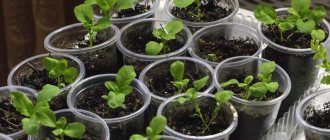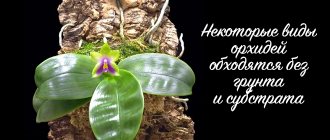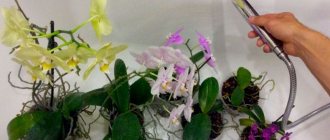Many people are familiar with the situation when they gave a bouquet of chrysanthemums, and it stood in a vase for weeks, still just as fresh and beautiful. The thought involuntarily creeps in about whether it is possible to plant these bushes in your garden. It turns out yes: chrysanthemum stems take root very easily. Let's find out what needs to be done to root cuttings from a bouquet and grow beautiful flowers from them in open ground or a flowerpot.
Propagation from bouquets
It is very easy to propagate chrysanthemums from bouquets. To do this, the flowers in the vase must bloom. Next, all the leaves are removed and the top is pinched off. Change the water in the vase and wait for roots to appear before transplanting into a pot or flowerbed.
You can also collect seeds from dry chrysanthemums with small flowers. They will make good seedlings in the spring.
Propagation of chrysanthemums, the methods and features of which are described above, is not difficult to perform, but in the future it is necessary to focus on the following points:
- To form buds, the bushes need a short day and a long night;
- for plant growth and leaf formation, long daylight hours are needed;
- plants with thin and large leaves need highly moist soil;
- bushes must be weeded and the soil under them loosened once every ten to twelve days;
- Apply mineral fertilizers several times a season.
Having become familiar with the features of each method of plant propagation and applying them in practice, you can decorate your gardens with lush and bright chrysanthemum bushes that will delight the eye until late autumn.
Possible problems
When growing flowers, gardeners may encounter some problems:
- The appearance of small green insects is aphids. Control measures: rinse the plant well with water and spray with a special fungicide. The popular method is to treat with a soap solution.
- Drooping leaves - lack of moisture, water the plant generously.
- The buds do not bloom or fall off - the plant has suffered stress or lacks sunlight and warmth. It is recommended to transplant to sunlit areas.
- The plant blooms, but the lower foliage turns yellow - this is a natural process. Just remove the dry leaves.
In order for the chrysanthemums in the bouquet to withstand winter frosts well, they are insulated with leaves or sawdust before the onset of cold weather.
Flowers are used in landscaping flower beds and garden plots. They grow well at home on windowsills. Chrysanthemums look beautiful when composing autumn compositions.
It is very easy to grow a chrysanthemum from a bouquet; the main thing is to follow certain rules of care and envelop each flower with your love. And then the plants will delight you with a riot of different colors.
Useful articles about growing chrysanthemums on our website:
Propagation of chrysanthemums by cuttings from a bouquet
Chrysanthemums are usually propagated by cuttings in the fall. At this time, the plants are just blooming. Propagating chrysanthemums from cuttings has several advantages. Firstly, this will allow you to quickly plant exactly the flowers that you like. You will immediately see what size, shape and color the buds of the future chrysanthemum will be. When you buy a flower bush in the spring, you won’t know all this. You just have to trust the seller's assurances.
Another advantage is the low cost of the planting method. You will not pay for the flower as planting material. You will take it from an already purchased bouquet. Agree that this is a nice bonus.
Flower selection
Start propagating chrysanthemums by cuttings by choosing a suitable flower. It would be good if it was a stem with shoots. Such planting material takes root faster and grows. But if there are no such branches, an ordinary flower will do. Choose several cuttings at once, this will increase the likelihood of flowers rooting.
You should not choose flowers with clear signs of disease. Most likely they will not be accepted. In addition, the infection can spread to other indoor flowers if they are nearby.
What to do with the flower?
The chrysanthemum flower must be trimmed. Cut off the bottom of the cutting, as well as the top, that is, the bud itself. Remove all leaves and side shoots from the remaining branch, as they draw strength from the stem that should go to rooting.
After this, the cuttings are placed in water. You can add Kornevin or another drug to it that activates the appearance of roots. You can also add activated carbon to the water. It neutralizes microorganisms that usually cause putrefactive processes. This will reduce the likelihood of the cuttings rotting.
The chrysanthemum cuttings should stand in water until they take root. This may take a month. If suddenly the twig begins to rot, then do the following:
- Cut the bottom to a healthy place.
- Change the water in the glass.
- Add activated carbon to it.
This way you will save the cutting and give it a second chance to root. As soon as the roots appear, plant the flower in a flowerpot.
Don't be afraid if the flower in the glass begins to dry out. Outwardly it seems spoiled, but in reality it may soon take root.
Which flowerpot is better to take?
Propagating chrysanthemums from cuttings is not a very quick process. Therefore, you don’t need to buy a huge flowerpot right away. For the first time, a small one, not deep, will be enough. The main thing is that it is wide. In such a container, the chrysanthemum will gradually develop the soil. When the flower grows, you can transplant it into a larger flowerpot.
Why can’t you use a large flowerpot right away? The fact is that the plant cannot immediately master all the soil. As a result, unused moisture may stagnate in places. This leads to the appearance of putrefactive processes and pests. In addition, the soil may become acidic, which will also negatively affect the condition of the chrysanthemum. Therefore, it is better to use a pot of optimal size. In it, the roots will develop almost the entire area.
Soil for chrysanthemums
How to grow chrysanthemums at home and what soil to choose for them? These flowers grow well in loose, nutritious soil. Land that is poorly saturated with minerals is not suitable for them. Chrysanthemums also do not feel comfortable in dense, heavy soil. To ensure that the soil has an optimal structure, prepare it yourself. To do this, buy:
- universal substrate;
- perlite;
- sand;
- coconut fiber.
All this must be mixed in such a way as to obtain loose, breathable soil. You can add a little dry fertilizer to it. But you shouldn’t go overboard with mineral supplements. You will still have time to fertilize the soil when the chrysanthemum takes root well.
How to grow chrysanthemums at home: planting process
When the flowerpot and soil are ready, you can start planting the cuttings
This must be done carefully so as not to break off the tender, newly emerging roots. You can pour a little water into the hole prepared for the cutting.
You need to cover the flower with soft, loose soil. You don’t need to trample it down too much, but you shouldn’t plant the flower so that it dangles.
When is the best time to propagate chrysanthemums?
Early autumn is the right time to propagate chrysanthemums by cuttings. In early September, cuttings can be taken. Before winter, they take root well in water or directly in the ground. It is most convenient to propagate indoor chrysanthemums by cuttings in early spring.
All types of chrysanthemums take root well during the summer if repeated pruning is done. Another option is storing the mother bush, which is sent for storage in the fall. In early spring it will begin to grow shoots that can be rooted.
| On a note. In early spring, seeds of various chrysanthemums are planted. |
Appearance and useful properties
Large and medium-sized chrysanthemum flowers are double and daisy-shaped and are painted in such bright, rich colors of the most beautiful shades of white, pink, yellow, lilac and purple that you can look at them endlessly. There are two-color specimens, which are also difficult to take your eyes off.
The flower has the property of releasing beneficial phytoncides, which purify the surrounding air from gases and harmful impurities emitted by appliances and finishing building materials operating in the apartment. It is useful to inhale the aroma of chrysanthemum - its smell heals nerves and calms a person.
Chrysanthemum cuttings in spring
The best time for cuttings is spring. The period from March to April is for early varieties of chrysanthemums, from April to May - for middle and late ones. How to quickly grow chrysanthemums from cuttings for spring planting in the ground? It is not difficult.
When to take chrysanthemum cuttings
From the middle or end of February, the bush is transferred to a warm room and watered abundantly. It is possible, but not necessary, to feed the plant with organic fertilizer. Ammonium nitrate gives good growth.
When young shoots appear, after about 8-12 days, they are allowed to grow to 10-12 cm, and then cut off to their full length.
Important! The cut branch must have at least four empty segments - the distances between the leaves, which are called internodes.
How to prepare cuttings
The tops are broken off or cut off completely, leaving 2-5 leaves on the mother stump - this is enough to resume growth. On the cuttings themselves, in order to avoid rotting, the lower leaves are removed and the upper leaves are shortened by 1/3 - they are pinched, if there are small side buds on the shoot, they are also torn off and then planted.
Important! For rooting, leave the strongest and most elastic cuttings at the base. Shoots with a soft or hard base are discarded
Planting cuttings in substrate
The soil for planting should be well moistened. The depth of the hole is no more than 2 cm, the distance between cuttings is 5-6 cm, if three or four cuttings are planted in a container. You can plant one cutting at a time in a small pot or plastic glass.
How to care for cuttings
If these are medium and late varieties and the weather is warm enough, the containers are taken outside, into fresh air, but placed under a canopy to protect them from rain and gusts of wind.
Water moderately and carefully, avoiding either drying out of the soil or excess water. 14-16 days after rooting of the cuttings they can be transplanted to a permanent place
Early varieties, when it is still quite cold outside, are covered with film so that the boxes with cuttings are under the dome. At least 35 cm of free space is left between the tips of the cuttings and the film.
Water sufficiently, periodically removing the film. The main sign of rooting is the growth and appearance of new leaves. After 5-7 new leaves appear, pinching is done. The upper leaves are shortened a second time when the side shoots reach a length of 9-10 cm.
Did you know? Thanks to regular pinching of the shoots as they grow, a neat, beautiful bush with good weather resistance is formed.
“Film” cuttings must be hardened 7-10 days before planting. To do this, they are opened and taken out onto the veranda or balcony, they can be placed near an open window without drafts, and at night it is better to cover them again. They are planted in the ground after the threat of frost has passed.
There is a way to propagate chrysanthemums by cuttings without prior germination and rooting in containers. This is another option for spring cuttings of chrysanthemums - directly into the ground.
It is done in late spring in mid-early May and June, that is, when the weather is warm. Cuttings are cut from bushes that have overwintered and have already produced young shoots.
To do this, a new branch of chrysanthemum must grow 14-15 cm. Cut it to half - about 7-8 cm. Plant it immediately in a high bed, sprinkle it with sand and water it.
Cover the top with a film, the air gap between the top of the cutting and the film is at least 50 cm. If the weather is warm, then there is no need to cover it with polyethylene; if it gets cold, then cover it.
15-18 days after rooting, the seedlings can be transplanted to their permanent designated place.
Important! Chrysanthemums are light-loving, and it is better to plant them in open, unshaded places. This way they will develop and bloom better
With proper placement and care, chrysanthemums can bloom for more than a month.
What flowers are suitable for rooting
Despite the fact that chrysanthemum takes root easily without much effort, you need to carefully select the material for propagating flowers. The following requirements apply to it:
- There should be no signs of rot on the stems.
- Cuttings should be strong and healthy in appearance.
- The shoots should not be old or young: cuttings of medium thickness and rigidity take root best.
The best choice is cuttings with side branches. They take root faster than others. But do not harvest them from weak, sick, young or too old bushes. They will not have the strength to take root, and if they do, they will most likely rot after planting in the ground: save your time and energy.
Reproduction through seedlings
Chrysanthemums can also be propagated through seedlings. To do this, the seeds are sown in small boxes, at the bottom of which there is a drainage layer of sand.
The containers covered with film are stored at an air temperature of 25 °C. In two weeks, the first shoots will appear, which must be gradually hardened, removing the film first for one, and then for two hours, and so on. The strongest seedlings germinate after they have 3–4 leaves. Young plants grow very slowly and reach 20 cm in height only after a month and a half at a temperature of 18 °C.
Plants are planted in a permanent place at the end of May. The landing site should be protected from the wind and well lit. The best fertilizer to use is humus. Clay or sandy soil should be improved with organic fertilizers.
Landing
Instructions for planting a rooted cutting in a pot:
- Disinfect the bowl and all equipment you will work with.
- Heat the prepared soil mixture.
- Place a layer of drainage material into the prepared bowl.
- Place soil on top of the drainage.
- Remove the rooted cutting and plant it in a container, deepening it 3-4 cm.
- Moisten the soil and place the pot on an east or west window.
You can keep a chrysanthemum in a pot for as long as you like if you care for it properly. You can even get it to bloom right at home.
How to propagate indoor chrysanthemum. How to propagate chrysanthemum?
It is difficult to find a summer cottage where chrysanthemums grow, decorating the landscape from July until late autumn. To grow this flower while maintaining its varietal qualities, you need to know some rules for its propagation.
Deadlines
The timing is influenced, first of all, by the method chosen for propagating chrysanthemums. The timing of seed planting is determined by the time it begins to flower. Early flowering varieties are sown for seedlings at the end of February or beginning of March, and late flowering varieties - from the 20th of March to the first half of April. When planting seeds directly into the ground, sowing is carried out in May.
When cutting, the mother bush is selected in the fall, although cuttings will be cut in the spring. The timing of spring cuttings also depends on the beginning of flowering: cuttings of early flowering chrysanthemums are carried out in February, middle ones - in March, and late ones - in early April.
However, chrysanthemums can also be propagated by cuttings in summer and autumn.
Propagation of the plant by dividing the bush is most effective in early spring, when young shoots appear. If necessary, you can divide the bush in the summer, even during flowering. Summer division is best done in June when the plant is actively growing or at the end of August.
Important! The timing of chrysanthemum propagation is also influenced by its variety and type: single-stemmed chrysanthemums are usually propagated in April, May and early June, and multi-stemmed, large- and small-flowered ones - in March
The necessary conditions
Certain conditions are required for successful reproduction. First of all, you need to choose the right shoots for cuttings: it must have at least 4 leaves. It is not recommended to use either too underdeveloped or, conversely, fattening shoots. Woody shoots or if their internodes are too close are also not suitable. When cuttings in autumn, you should select a mother bush with pronounced varietal properties in the inflorescences. The plant should be strong with no signs of disease or pest damage.
A bush dug up in the fall and transplanted into a bowl should be kept in a cool room until spring. If the room has good humidity, then the mother bush does not need to be watered. Only when the soil dries out should it be slightly moistened. The best temperature in the room should be from +5 to +8 degrees. The effectiveness of cuttings depends on the number of young shoots. To ensure there are enough of them, in February the bush should be placed in a warm, well-lit place and watered regularly in the future.
Only those new shoots that grow from the root system are selected for cuttings. After planting the cuttings in a separate container, they are provided with the following conditions:
- the content temperature should be from +15 to +20 degrees;
- seedlings are covered with polyethylene for 2–3 weeks until they take root; the distance from the film to the top of the cutting should be within 30 cm;
- periodically carry out water sprays (in hot weather up to 2-3 times a day);
- Feed the cuttings 2–3 times a month;
- in strong sunlight, cuttings need to be shaded, especially in the first 7–10 days after planting.
What to do after roots appear?
Rooting is considered complete on average 30-35 days after planting the cuttings in peat. If you decide to propagate an interesting variety of chrysanthemum from a bouquet in winter, when dacha experiments are still far away, then first transplant the developing bush into a spacious pot.
Choosing a flowerpot
The root system of the flower is superficial, so the shape and size of the pot for replanting matter. Chrysanthemums develop best in wide and low flowerpots with a diameter of 30 cm.
If you plan to subsequently replant the flower in a flowerbed, choose inexpensive plastic pots - they will be easy to cut so as not to injure the root system. Ceramic options are suitable for permanent cultivation - they provide good thermoregulation, oxygen flow to the roots and evaporation of excess moisture.
The soil
Chrysanthemums have established themselves as unpretentious flowers that do not require a strictly defined soil composition. Any loose, well-aerated soil rich in nutrients is suitable for them.
To fill the flowerpot, you can purchase a universal soil mixture or use garden soil with a neutral or slightly acidic reaction. It is advisable to first disinfect street soil by steaming or heating it in the oven; you can also scald it with boiling water.
Please note: when propagating chrysanthemums, a drainage layer at the bottom of the pot is required, since these flowers do not tolerate stagnant moisture.
For drainage purposes, you can use any suitable materials, from expanded clay and pebbles to charcoal and brick chips.
Landing
For young chrysanthemums rooted in water, make small holes 4-5 cm deep, since due to the structure of the root system it makes no sense to bury the seedling deeper. Next, proceed as follows:
- Place the cutting in the middle.
- Gently straighten the roots.
- Sprinkle with soil, pressing it lightly with your fingers.
- To prevent the tall shoot from falling, stick a stick nearby.
- Water well with soft water.
- Cover the top with a transparent cap from a plastic bottle.
If you are replanting a cutting from a mini-container, do not destroy the earthen ball that has formed around the roots. Make holes of appropriate size and transfer the plant to a flowerpot, sprinkle with soil, and water. For the first few days, keep the chrysanthemum under a transparent cap, then gradually accustom it to the external environment.
For a flower in a flowerpot, choose a place with good lighting, but without direct aggressive rays. In cold weather, chrysanthemums develop well on insulated loggias and balconies, and southern window sills.
Home care boils down to timely, not too abundant watering when the earthen ball dries out and loosening the soil for good aeration. Do not overdo it with moisture - constant dampness promotes the development of rot and fungus.
Note: while the chrysanthemum is growing in a pot, do not get carried away with fertilizing - it is easy to overfeed it. To stimulate growth, it is enough to occasionally apply a minimum dose of nitrogen fertilizers.
Bloom
Chrysanthemums bloom at home for a long time, more than a month. Flowering occurs in the autumn months. For more luxuriant flowering, during the growing season, up to mid-August, it is necessary to pinch the shoots two to three times. In order for the plant to develop more actively and form a larger number of buds, use biological products that stimulate its growth, such as Bud, Epin, Zircon. It is believed that the use of a light solution of potassium humate promotes rapid plant growth, expansion of its root system and an increase in the number and size of buds.
In the future, during flowering, regularly trim dried stems and faded buds so as not to create conditions for pests and not to spoil the decorative appearance of the bush.
What to do if the chrysanthemum has faded?
Under natural conditions, after the chrysanthemums fade, winter comes. The bushes go into hibernation. You need to create something similar at home.
After your chrysanthemum has bloomed, cut all its shoots to a height of 10 - 15 cm; weak and diseased shoots - cut to the root. Water and store in a cool, dark place until spring. Its temperature in winter should be between zero and three degrees. Such temperatures are maintained in winter in cellars and basements. There you will keep the flower until spring. In early spring, when new shoots begin to grow, the plant is brought indoors, replanted in new soil and placed on a well-lit windowsill.
If you do not have a basement or suitable cellar, the chrysanthemum will have to be kept in some other suitable place in the winter. An insulated balcony, a glazed veranda or a window sill in the entrance, where the temperature will not exceed 8 degrees, is suitable. Watering is almost not required; once during the entire wintering period will be enough.
If there is no cool room in the house, your chrysanthemum will have to spend the winter on the windowsill in the apartment, closer to the cold glass. You also trim it a little, remove all dry leaves, shoots, buds. Replant in new nutrient soil. Care for the flower as before - water moderately, do not let the root system dry out, but do not overwater it. Make sure that the bush is well lit from all sides - turn it with different sides to the sun. Ventilate the room. In a month and a half, your beauty will grow again. Shape the crown - trim shoots that are too elongated, pinch them. Then the bush will become more magnificent and form more buds. Feed him. Keep in mind that since you have deprived the chrysanthemum of a full winter rest, the flowering will not be as lush and long-lasting as the first time. After the next flowering, you will have to part with the flower or, nevertheless, organize a full rest break for it (place it in a cold place for the winter until spring).
Why didn't the chrysanthemum bloom?
Everyone is waiting for the obligatory abundant flowering of the chrysanthemum bush in early autumn and even earlier. If flowering does not occur at the appointed time, it means that you did something wrong during the many months of caring for the flower. Reasons that could cause the lack of flowering:
- insufficient lighting,
- poor soil composition,
- lack of fertilizers or excess nitrogen component in them,
- late pruning of a bush, in which you cut off shoots with buds.
Analyze your actions and correct mistakes. If the bush is generally strong and healthy, it will definitely delight you with its magnificent flowering next year.
Common mistakes
Inexperienced gardeners often make mistakes such as:
- the uterine bush is not cut low enough, leaving long shoots is not recommended;
- the uterine bush is stored in a warm room with a temperature significantly higher than +7 degrees, which leads to premature growth of shoots;
- Too short shoots are used for cuttings: underdeveloped shoots do not take root and rot;
- when planting seedlings, fresh manure is used, which is strictly prohibited; you can only use humus or compost, as well as store-bought mineral fertilizers;
- fertilizing is applied in excess volume, which leads to the rapid formation and increase in the volume of green mass; such plants may not flower;
- when feeding, fertilizer gets on the leaves, which can cause burns; Fertilizers are applied only at the roots.
Often cuttings do not take root for the following reasons:
- the cuttings were kept in the stimulating solution for too long;
- cuttings are placed in water, not soil;
- lack of heat or temperature fluctuations in the room where the seedlings are kept.
Features of propagation of chrysanthemums by cuttings
The rooting of cuttings and the growth of these flowers has certain features:
- small-flowered plants take root much faster than large-flowered ones;
- varieties with fleshy and thick shoots take root much worse;
- plants of the same variety, when grown from “early” and “late” cuttings, enter the flowering period almost simultaneously;
- The timing of cuttings greatly affects only the size of the plant (very tall stems grow from “early” shoots).
How to propagate chrysanthemums from cuttings?
In autumn, choose healthy bushes with perfect inflorescences. They should not show any signs of diseases or pests. At the end of flowering, the queen cells are buried in greenhouses or transplanted into boxes. Chrysanthemum bushes are left in a cool place, protected from excess moisture. Closed terraces, verandas or bright sheds are suitable for storing them. The storage location of queen cells depends on the level of winter temperature. Ideal conditions for the period of physiological dormancy of chrysanthemums are within 3-5 °C. The basic rule for their successful preservation is that these flowers should not be kept at a temperature of less than 1 °C.
To obtain young plants with an excellent level of flowering, it is necessary to vernalize the queen cells. For this, plants are kept in rooms with a temperature of 1-4 °C for 3-4 weeks. The absence of such a procedure often leads to the fact that some varieties of chrysanthemums never bloom.
To obtain good planting material, mother plants are transferred to a warm, well-lit room and watered regularly. A few days later, renewal buds awaken on their roots. At the same time, root shoots begin to grow from the queen cell. The effectiveness of cuttings depends entirely on the amount of new growth. To obtain a sufficient number of plants, mother plants begin to prepare for cuttings as early as February. Most often, this procedure is performed in early spring.
Only those shoots that grow from the root are suitable for cuttings. That is why any “stumps”, which are lignified flower stems, should be cut off. Since the development of root shoots often occurs unevenly, with a small number of queen cells, it is problematic to obtain young plants of the same age. To solve this problem, cut cuttings are stored in damp sawdust in the refrigerator (on the bottom shelf) for about 2 weeks. When a sufficient number of cuttings are received, they begin to root them.
How to cut chrysanthemums?
The root shoots are cut with a sharp knife under the leaf node when 2-3 internodes are formed on it. The resulting cuttings are planted in boxes or low pots with fertile substrate with a neutral reaction. It is prepared from fertile soil, humus and sand, taken in a ratio of 2:1:0.5. The thickness of the substrate should be 3-4 cm. Calcined sand is poured on top of it. Its layer should be 2-2.5 cm. You can also use a mixture of perlite and coarse sand in a 1:1 ratio. This substrate has high moisture capacity and breathability.
The cuttings are buried in the substrate to a depth of 2.5-3 cm. The optimal temperature for rooting cuttings is 18-20 °C. In the room used for rooting cuttings, it is necessary to maintain an optimal microclimate. To do this, a “dome” of polyethylene film is made over the container, providing the necessary air humidity.
Growing
Caring for cuttings involves spraying them daily and regular watering. Successful rooting is indicated by the appearance of growth on the shoot. Plants can be fed with nitrogen fertilizer. About 1 month after the cuttings begin to root, a root system develops on them. After it becomes powerful enough, new plants are planted in open ground. Most often this happens in May-June.
In the case when rooted shoots cannot be planted in open ground due to the possibility of frost, they are kept in rooms with an air temperature of 8-10 ° C. Under such conditions, “overgrowing” of the cuttings will be prevented. They are planted in a permanent place only after there is no threat of spring frosts. If you do not plan to root the cuttings immediately after cutting, then they are placed in a container with water.
Cuttings of large-flowered chrysanthemums are carried out from January to April, and of small-flowered chrysanthemums - from February to the end of May. Propagation of chrysanthemums in autumn involves planting rooted cuttings in late May and early summer. At the same time, the young bush will bloom early next year.
Necessary conditions for the growth of chrysanthemums
Growing chrysanthemums in the garden requires compliance with certain maintenance conditions. Let's find out what this flower loves.
Lighting and location
Chrysanthemums love a lot of light, but do not tolerate the scorching rays of the sun at lunchtime. Therefore, it is best to plant flowers in a place where shadow falls at midday (near the wall of a house, near a fence, near a tree or bush). The optimal location is eastern.
Temperature
In summer, chrysanthemums prefer to grow at temperatures of +20...+23 oC. They winter well: flowers can tolerate frosts down to -28 °C. But since it can be colder in Russia in winter, it is better to cover the flowerbed with a heap of leaves or peat.
Air and humidity
Chrysanthemums love moderately humid air (50-70%). Overwatering can lead to the development of fungal infections. And the lack of moisture in the air can cause pests to damage flowers and dry out its leaves and flowers. It is better to plant chrysanthemums in a place protected from drafts.
How to propagate indoor chrysanthemum. Lush flowers on an astonishing scale
Chrysanthemums are so popular at the end of the season not only because the color palette ideally represents the so-called autumn palette. The colors of chrysanthemum flowers really perfectly highlight the crimson-fiery autumn colors. But no color nuances can overshadow the main thing - tireless and very long flowering, unique in its scale and abundance. In addition, potted chrysanthemums have a wide variety of varietal colors.
Potted chrysanthemum. bittster
Potted chrysanthemums that cannot withstand winter frosts can be grown in two forms:
- Seasonal indoor or balcony annual;
- A perennial that is put indoors for the winter and pruned after a dormant period, stimulating growth.
Potted chrysanthemums can also be planted in open soil - but then they will need to be dug up and transferred to pots for wintering. Therefore, they are most often grown in container culture.
Chrysanthemums in container form differ from their garden counterparts. They develop in the form of dense, cushion-shaped bushes, formed by pruning and bred specifically to produce specimens of increased density. Numerous shoots become woody, dotted with simple carved leaves, which most often do not create a particularly impressive crown, but merely serve as a background for the flowers. They bloom at the tops of the shoots in such numbers that they create continuous caps.
Classic basket inflorescences of potted chrysanthemums can be simple or densely double, with wider or very narrow reed petals. And the color, which includes all the warm shades of white-cream, yellow, orange, red, purple, brown, can be either monochromatic or combined and even contrasting.
Today, new blue-flowered chrysanthemums and original green-flowered plants are in fashion, as well as varieties with dazzling acrylic colors. Large-flowered varieties are even more popular - hybrids with spherical, pom-pom, anemone-shaped inflorescences, which decorate gardens throughout the warm months, and bloom indoors throughout the fall and winter.
Potted chrysanthemums vary in size. For indoor cultivation and indoor cultivation, mini-varieties are chosen, the height of which does not exceed 30 cm. But the specimens intended for open air are twice as large, sometimes reaching 1 meter in height and diameter. Potted chrysanthemums can be standard, shaped like a ball, squat, or even splayed. In a word, there is plenty to choose from. Moreover, indoor chrysanthemums are sold in bloom throughout the year, while garden chrysanthemums today appear on the shelves in the spring, specially driven out at atypical times. But such “early maturing” plants are just a temporary decoration for both the house and the garden, which will have to be thrown away. If you want to preserve chrysanthemums, buy them during the typical flowering time - from late summer through autumn. When purchasing, be sure to check exactly what conditions the chrysanthemums are accustomed to and how they need to be grown: sometimes locally distilled chrysanthemums require specific care.
Potted chrysanthemum. Karen Maraj
In order for potted chrysanthemums to bloom truly profusely, they will require simple but constant care and rather specific conditions. They bloom luxuriantly at low temperatures, and this requirement can be ignored only when grown as an annual plant or taken out into the fresh air. Watering and fertilizing are frequent, but other than that, there are usually no difficulties with chrysanthemums.
Rooting technology for cuttings
Depending on the rooting time, cuttings can be planted in pots or directly in open ground. But first the cuttings need to be germinated in water. For germination, prepared shoots are placed in a glass with clean, filtered or boiled water. To prevent bacteria from multiplying in water, an activated carbon tablet is added to it.
Before installing the cutting in water, it is recommended to keep it for 3-4 hours in a root formation stimulator solution: Kornevin, Heteroauxin. The concentration of the solution recommended on the packaging can be increased by a third.
Requirements for soil composition and containers for planting
The roots on the cuttings appear after 4-5 days. After this, the rooted shoots can be planted in the soil.
The substrate for germinating chrysanthemum cuttings must be slightly acidic or neutral. Acidic soils are contraindicated for this plant. Optimal acidity is ensured by wood ash added to the substrate.
To root chrysanthemum cuttings, choose a wide container.
For good growth, cuttings need a large supply of nutrients, so it is recommended to add humus or well-rotted compost and a small amount of nitrophoska to the soil. The soil for planting chrysanthemums must have air and water permeability, so perlite or vermiculite is added to the substrate to provide maximum looseness. Cuttings can also be planted in a mixture of vermiculite and peat.
The root system of the chrysanthemum is superficial and tends to grow not in depth, but in breadth. Therefore, the container for growing chrysanthemums is selected to be shallow, but wide enough, at least 30 centimeters in diameter.
Experts advise choosing plastic pots for planting chrysanthemum cuttings. Unlike ceramic ones, they retain moisture well. When rooting chrysanthemums from a bouquet, this circumstance is very important.
Rules for planting cuttings
Planting the cuttings in the soil must be done when the roots reach a length of 0.5-1 centimeter. It is impossible to keep the shoot with roots in water, as it will begin to rot.
Before filling the pot with the prepared soil mixture, a layer of drainage is placed on the bottom to drain excess liquid when watering. A small amount of substrate is poured onto the drainage layer and the cutting is placed on it. The shoot must be buried 4-5 centimeters into the soil. Excessive deepening of the cuttings is contraindicated.
The cuttings are gradually covered with soil, lightly compacting it. The soil surface is well moistened. To create greenhouse conditions, the cuttings are covered with a plastic bag or other transparent cap. The shelter on the pot should remain for at least 14-15 days.
The most popular varieties
Breeders have developed many varieties of indoor chrysanthemums. All of them can be divided into four groups:
- Herbaceous varieties - up to 35 cm high, have large dark green leaves with double or simple flowers with a diameter of about 5 cm;
- Varieties of spherical chrysanthemum - from 30 to 60 cm in height. They have many small leaves and flowers, no more than 2.5 cm in diameter;
- Shrub-shaped varieties - up to 50 cm in height, carved leaves, large simple flowers up to 7 cm in diameter;
- Varieties of cascading chrysanthemums have hanging shoots strewn with daisy-like flowers, the diameter of the flowers is 4 cm.
Chrysanthemum "Malchish-Kibalchish" grows no higher than 50 cm in height. The bush is spreading - it grows up to 60 cm in width. It blooms profusely with flowers of rich red, sometimes lilac, color, similar to daisies. The variety is early, unpretentious, blooms profusely, and frost-resistant.
Korean chrysanthemum “Evening lights” is a compact bush, about 35 cm in height. It blooms with large, up to 5.5 cm in diameter, simple red flowers with a yellow center.
Chrysanthemum “First Snow”. The height of the bush can be up to 35 cm, and its width is up to half a meter. The bush is voluminous, but strong and does not fall apart. It blooms with large, up to 5 cm in diameter, semi-double flowers of bright white color from the second half of August for 30 - 40 days.
The Dune variety reaches 50 cm in height and is the same in width. A very early variety. The flowers are large, up to 7 cm in diameter, yellow-brown in color. Interestingly, as the flower opens, its color changes from reddish-yellow-brown to pure golden yellow.
Chrysanthemum “Zorka” is a bush up to half a meter high, double inflorescences, up to 6 cm, yellow-brown with a copper tint. A very beautiful early variety.
“Talisman” is a low bush, up to 25 cm in height, with small dark crimson inflorescences.
Chrysanthemum “Cheburashka” is a compact hemispherical bush, up to 40 cm high. It blooms with lilac double inflorescences, up to 4 cm in diameter.
In “Varvara” the bush grows up to 40 cm. It is distinguished by such abundant flowering that, due to the double, pink-lilac inflorescences with a yellow center, sometimes flower leaves are not visible.
Chrysanthemum "Flamingo" has a height of up to 50 cm. The flowers are large, up to 7.5 cm in diameter. The color of the petals is soft pink, becoming more saturated towards the center of the flower.
Variety “Pink-cream” - reaches a height of half a meter, blooms for a long time, dense double pinkish-lilac inflorescences have a diameter of up to 8 cm. As they fade, the inflorescences become pinkish-cream in color.
Chrysanthemum "Leaf Fall" - This is a chameleon plant. Its height is up to 45 cm. Its inflorescences are large, reaching a diameter of 7 cm. They are painted pink-red, which changes over time to flesh-yellow.
“Crimson” pompom is a dwarf variety. Its height is up to 30 cm. The inflorescences are hemispherical, with a diameter of 6 cm, pink-crimson in color.
"Okishore" is a powerful bush up to half a meter high. Blooms profusely with pinkish-lilac large inflorescences, up to 8 cm in diameter.
“Syaivo” is a variety of Ukrainian selection. It has large, bright, egg-yellow inflorescences, up to 8 cm in diameter.
Chrysanthemum “Apple Blossom” is a powerful bush up to 50 cm high, with thick stems strewn with large, up to 8 cm in diameter, pinkish-white double inflorescences. Suitable for cutting and forming bouquets.
Rules for selecting and cutting stems
There are rarely any problems with the rooting of chrysanthemums, and the roots can produce almost any shoot. But you should not try to germinate shoots that are too young, have not gained strength, or shoots that are too old, woody. Young shoots rarely take root, and old ones begin to rot without having time to germinate.
To prepare cuttings, you should choose from a bouquet a chrysanthemum with strong, semi-lignified, richly colored side shoots growing from the axils of the leaves. The most viable are the lateral shoots located on the main stem before the flowering shoots. But if the shoot already shows signs of yellowing, you should not root it.
Important. You should not choose for rooting shoots that are too thick, coarsened, or cuttings that have too many internodes.
Only strong side shoots are suitable for cuttings.
Selected viable shoots are cut from the mother stem in such a way that a “heel” remains at the lower end, that is, part of the base of the central stem. On the blanks, all leaves are removed, except for 2-3 apical ones. The top leaves need to be cut to a third of their length. This technique will limit the growth of leaves on the shoot and stimulate the formation of roots on it. To ensure future branching, the crown of the shoot must be pinched.
Caring for cuttings
Caring for the cuttings:
in the room where cuttings are carried out, the temperature is maintained within +15...+17 C and up to +18...+20 °C; plants are kept under a plastic cover for 2-3 weeks, until complete rooting
The height between the tops of the plants and the film is about 30 cm; It is important to carry out spraying - in sunny weather, spray 2-3 times a day; fertilizing is carried out - saltpeter with the addition of organic matter, complete mineral fertilizer. The frequency of fertilizing during cuttings is 2-3 times a month; On particularly sunny days, the plants are shaded in the first week after cuttings.
Upon completion of rooting, the film is removed. After 5-7 days, the cuttings are planted in glasses and pots with a volume of up to 200-300 ml. At the stage of 2-3 leaves, the seedlings are pinched to enhance branching. The next pinching is carried out when the branching side shoots reach 8-12 cm.
Cuttings are planted in open ground only until the end of September, and only in the southern regions. Planted after hardening, when active growth of the shoot tip begins. If we are talking about closed ground, reduce the temperature in the room with chrysanthemums. If we are talking about planting rooted cuttings in the spring, then they are stored, digging in, in a cool cellar, on an unheated veranda, balcony, etc., maintaining the humidity of the substrate.
They are planted after abundant watering, at the same depth as in the pots, according to the pattern 20-25x30-35 cm, watered, then mulched.
Transplantation into open ground: timing and technology
Rooted chrysanthemum cuttings are planted in open ground from mid-April to mid-May, depending on weather conditions. Despite the cold resistance of chrysanthemums, young, immature plants may not tolerate being planted in cold soil or exposed to short-term spring frosts.
Important. If the leaves have already formed on the bush and it is completely ready for planting in open ground, but it is still cold outside, the plant needs to be provided with coolness and maximum lighting. When kept warm, even with plenty of light, the plant will stretch. The best option for keeping chrysanthemums in a pot in this case is to install them on a glazed balcony or loggia.
For planting chrysanthemums, select a sunny, dry area. Preferably on a hill. Planting chrysanthemums in lowlands where moisture stagnates for a long time is contraindicated. In such conditions, the roots of the plant will begin to rot.
Grown chrysanthemum cuttings can be planted in open ground in the spring.
The area for planting cuttings is carefully dug up, 5 kilograms of humus or peat per square meter, 500 grams of wood ash and 70 grams of nitrophoska are added to it.
For planting, shallow but wide holes are prepared, at the bottom of which drainage is placed (broken red brick, expanded clay, granite chips or small pebbles). The distance between planted plants should be 30-40 centimeters. The cuttings are placed in the soil at the same level at which they grew in pots.
[adsp-pro-7]
Transplantation is carried out using the transshipment method, taking care not to damage the roots. The plants are removed from the pot along with a lump of earth and placed in a prepared hole. The surface is lightly tamped and watered abundantly. To maintain moisture in the soil, the surface is mulched with peat or dry leaves.
Advice. To prevent the planted bush from being swayed by gusts of wind, it is necessary to provide support. The plant can be fenced with a low fence, which will protect the plant from gusts of wind and at the same time serve as a support.
Propagation from bouquets
It is very easy to propagate chrysanthemums from bouquets. To do this, the flowers in the vase must bloom. Next, all the leaves are removed and the top is pinched off. Change the water in the vase and wait for roots to appear before transplanting into a pot or flowerbed.
You can also collect seeds from dry chrysanthemums with small flowers. They will make good seedlings in the spring.
Propagation of chrysanthemums, the methods and features of which are described above, is not difficult to perform, but in the future it is necessary to focus on the following points:
- To form buds, the bushes need a short day and a long night;
- for plant growth and leaf formation, long daylight hours are needed;
- plants with thin and large leaves need highly moist soil;
- bushes must be weeded and the soil under them loosened once every ten to twelve days;
- Apply mineral fertilizers several times a season.
Having become familiar with the features of each method of plant propagation and applying them in practice, you can decorate your gardens with lush and bright chrysanthemum bushes that will delight the eye until late autumn.
Tips, recommendations
Experienced gardeners and flower growers give the following advice:
- To prevent cuttings from rotting when rooting in water, if you might forget to change the water, add 1 tablet of activated carbon to the jar. It will slow down the development of putrefactive processes.
- If the chrysanthemum itself has given roots after standing in a vase for a long time, then it can be planted entirely in a pot or open ground.
- When planting a whole bush (not small cuttings) in the ground, pruning is required to stimulate the growth of the root system and the above-ground part of the plant. To do this, you need to cut off the main shoot, leaving 4-5 leaves. New branches will form from them.
- If a rooted cutting forms buds, remove them without pity. The plant needs strength to adapt to a new place and form a bush. The chrysanthemum will be frail if you let it bloom in the first year after rooting.
- An opaque container (ceramic mug, plastic container) will help speed up the root growth process. Rooting occurs better in the dark.
- If you decide to grow chrysanthemums from a bouquet in the open ground, then you will still have to dig up the first-year plants for the winter, placing them in large pots and sending them to the basement for the winter. The first frosts for young flowers that have not yet had time to strengthen can be disastrous.
- When transplanting an adult chrysanthemum from a pot into open ground, removing the bush by cutting the container will help avoid damage to the root system. Therefore, it will be good if the flower grew in a plastic container.
Propagating chrysanthemums by rooting cuttings taken from a bouquet is not difficult. So you can handle it for sure. Often, flowers root on their own, by accident. But if you put in at least a little effort, you will definitely get your own chrysanthemum bush in the garden. Watch the video on how to properly root cuttings.
Chrysanthemums as a garden crop have been known for more than three thousand years, and during all this time they have remained popular and loved by many people. Many lovers of these autumn plants are interested in the question of how to plant a chrysanthemum from a bouquet. After all, it can be very pleasant to receive and give these gorgeous flowers. This is quite easy to do with just a few cut flowers.











